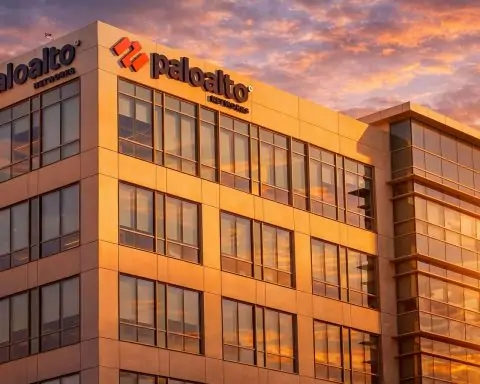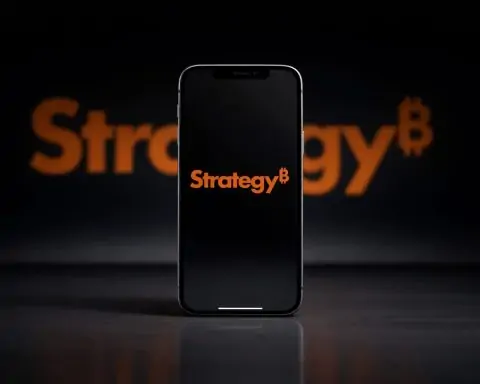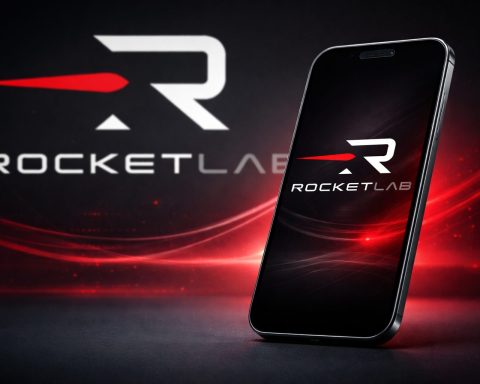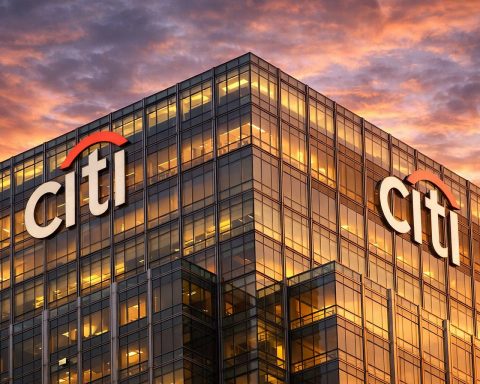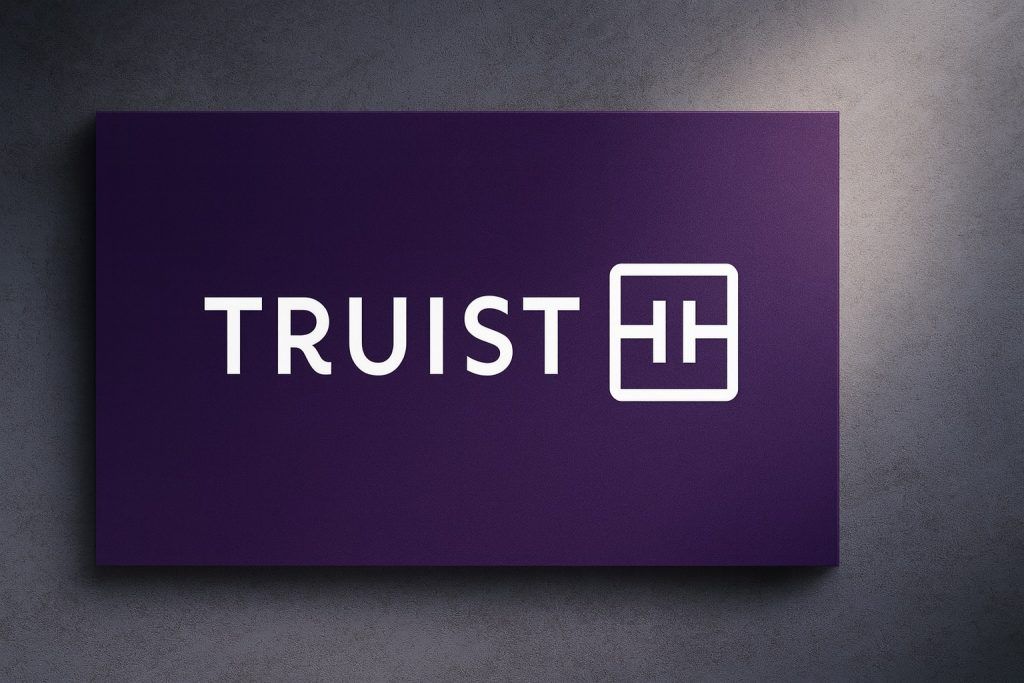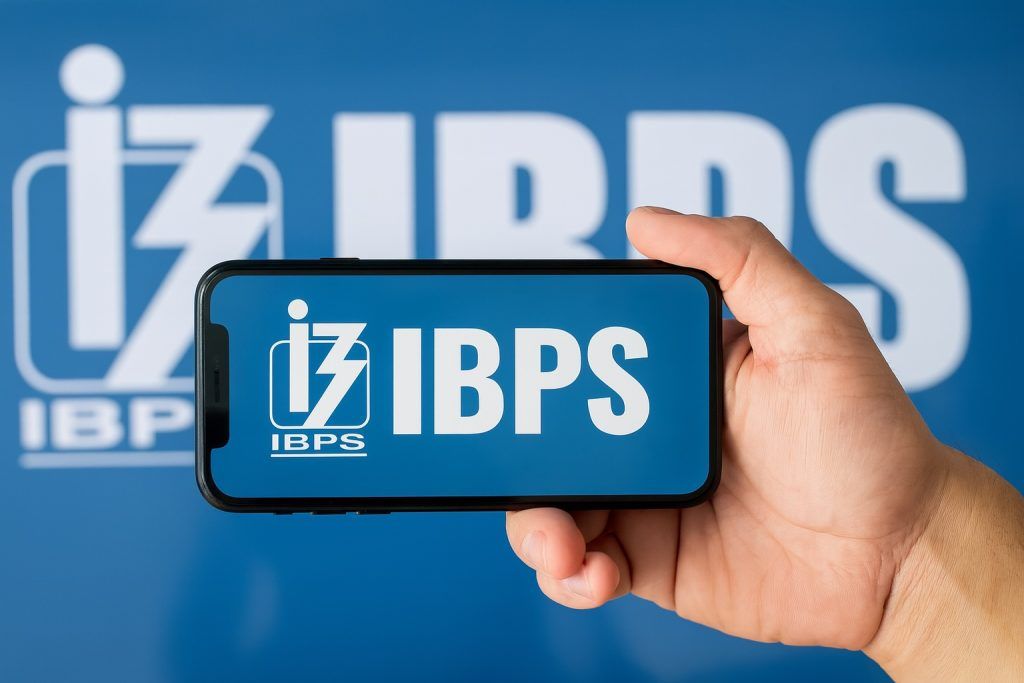- FDA Fast Track Sparks Rally: Artiva Biotherapeutics (NASDAQ: ARTV) shares doubled in after-hours trading on Oct. 16, 2025 after the company announced FDA Fast Track designation for its AlloNK cell therapy in refractory rheumatoid arthritis [1]. The stock briefly surged ~100% to around $5.75–$6.33 per share (from a ~$3 prior close) on the news [2] [3].
- Recent Price & Volume Spike: ARTV last closed at $2.77 on Oct. 16 [4], down 8% during regular hours despite heavy volume (~19.7 million shares traded, vs ~0.2 million average) as traders anticipated news. After the Fast Track announcement post-market, the stock skyrocketed to new highs, making Artiva one of the day’s top gainers [5].
- RA Therapy Breakthrough: The FDA granted Fast Track status to Artiva’s lead product AlloNK® (AB-101) for refractory rheumatoid arthritis (RA) in combination with rituximab [6]. This marks the first therapy in a new “deep B-cell depleting” category to earn Fast Track in RA [7] [8], potentially accelerating its path to pivotal trials (targeted for 1H 2026 pending FDA feedback) [9]. Artiva has now prioritized refractory RA as its lead indication, aiming to address an estimated 100,000 U.S. patients who don’t respond to existing RA drugs [10].
- Clinical Updates & Upcoming Data: Over 20 patients have already been treated with AlloNK plus antibody therapy across Artiva’s trials in autoimmune diseases [11]. The company plans to unveil translational (mechanistic) and safety data by mid-November 2025, demonstrating AlloNK’s ability to achieve consistent, deep B-cell depletion with a favorable tolerability profile [12]. Clinical efficacy data in refractory RA (from >15 patients) are expected in 1H 2026 [13], and Artiva hopes to initiate a pivotal Phase 3 trial in RA later in 2026 pending those results [14] [15].
- Analysts See Huge Upside: Wall Street analysts remain broadly bullish on ARTV. Four out of five analysts currently rate the stock a “Buy,” versus one “Sell” rating [16] [17]. The consensus 12-month price target is about $15–$17 per share [18] – implying several hundred percent upside even after the latest jump. For instance, H.C. Wainwright recently reiterated a Buy with a $12 target [19], while Weiss Ratings in early October maintained a contrarian “Sell (E+)” rating [20]. This divergence underscores the high-risk, high-reward nature of Artiva: bulls cite its novel platform and large market opportunity, while bears caution that the company is still early-stage with much to prove clinically.
- Market Sentiment & Momentum: The Fast Track news has shifted market sentiment sharply positive in the near term. ARTV’s massive after-hours leap and trending status as a top gainer [21] reflect surging investor enthusiasm. Trading volume exploded on the news – from just ~40k shares the day prior to almost 20 million on Oct. 16 – a sign of newfound attention from traders and possibly momentum investors. However, the stock’s 1-year trading range (lows around $1.47 to highs near $16.87 [22]) highlights extreme volatility. Earlier in the year, ARTV spiked into the mid-teens on optimism for its NK-cell therapy platform, only to pull back; now fresh catalysts are reviving speculative interest.
- Institutional & Insider Moves: Notably, institutional holders own about 76% of Artiva’s float [23], indicating that many shares are in the hands of funds and insiders – a factor that can magnify price swings on low float. In the second quarter, several hedge funds (e.g. Bridgeway Capital, Jane Street, Marshall Wace) took new small positions in ARTV [24], signaling some institutional curiosity. Insiders still hold roughly 20% [25]; Artiva’s CEO Fred Aslan sold a minor portion (6% of his stake) in August at ~$2.73 [26] [27], a move that some investors noted but which still leaves him with a significant holding. Overall, the presence of long-term stakeholders alongside recent trading frenzy suggests a mix of conviction and speculative trading in the shareholder base.
- Financial Health and Runway: Artiva remains a clinical-stage biotech with no product revenue yet, but its finances appear solid for now. The company reported a net loss of ~$21 million in Q2 2025 (typical for R&D-focused biotechs) and cash reserves of $142.4 million as of June 30 [28]. Importantly, management estimates this cash is sufficient to fund operations into Q2 2027 [29] [30], giving Artiva a comfortable runway to reach key milestones (like completing Phase 2 trials and starting pivotal studies) without immediate need for dilution. This strong cash position – bolstered by prior financings – has been a green flag for analysts and investors, as it enables the company to advance multiple trials (in RA and other autoimmune conditions) in parallel.
- Expert Commentary:Industry experts are cautiously optimistic about Artiva’s approach. AlloNK is an off-the-shelf natural killer (NK) cell therapy, which aims to enhance the effect of antibodies like rituximab by deeply depleting B-cells – a novel mechanism that could yield more durable remission for autoimmune diseases [31] [32]. Dr. Subhashis Banerjee, Artiva’s CMO (and a veteran of RA drug development), noted that most RA patients are treated in community clinics, so an “infusion-ready” cell therapy like AlloNK (which doesn’t require complex hospital procedures like CAR-T) could be a game-changer if proven effective [33]. Market commentators also emphasize that while Fast Track status is encouraging, clinical results will ultimately determine if AlloNK can fulfill its promise. “Investors were clearly excited by the Fast Track news, but the real test will be upcoming data,” one analyst observed, pointing to the mid-November readouts as the next big catalyst.
- Outlook: Going forward, all eyes are on Artiva’s data releases and regulatory interactions. In the coming weeks, early signs of efficacy (e.g. evidence of robust B-cell depletion and safety) could validate the company’s platform and further boost the stock. Positive RA patient outcomes by 1H 2026 could pave the way for a pivotal Phase 3 trial – potentially the first ever NK-cell therapy to enter late-stage development for an autoimmune disease [34]. Such a scenario underpins the bullish price targets (which envision Artiva evolving into a leader in autoimmune cell therapy). Conversely, investors recognize the risks: setbacks in trials or regulatory hurdles could temper the recent euphoria. Given ARTV’s small market cap (~$73 million at the $2.77 close [35], roughly ~$150 million at post-pop levels) and thin float, the stock is likely to remain volatile.
In summary, Artiva Biotherapeutics stock has erupted in October 2025 on the back of a major FDA Fast Track win and renewed optimism around its NK-cell therapy for RA. The latest developments – from surging share price and volume to analyst projections of multi-fold upside – underscore the high stakes and high hopes riding on AlloNK’s success. For biotech investors and observers, ARTV will be a stock to watch closely in the coming months, as upcoming trial data and FDA feedback chart the next chapter for this promising yet still speculative biotech play.
Latest Stock Price and Trend Analysis
[36] [37]Artiva’s stock price saw dramatic movement in the days surrounding the Fast Track announcement. On October 16, 2025, ARTV opened around $3.03 and initially traded within a tight range (intra-day high of $3.05) [38]. However, news began to circulate about an impending announcement, and shares spiked mid-day – at one point hitting $5.754, a ~91% jump from the open [39]. This surge was accompanied by a wave of trading volume (over 3.5 million shares by mid-session) [40], far above the stock’s normal activity.
By the end of regular trading, much of the intra-day gain had retraced – ARTV actually closed down about 8% on the day at $2.77 (from the prior close of $3.01) [41]. Notably, total volume for Oct. 16 swelled to roughly 19.7 million shares, compared to an average daily volume under 0.2 million [42]. This unusual whipsaw – a mid-day spike followed by a pullback – suggested speculative trading and possibly some profit-taking or algorithmic activity ahead of the official news.
Once after-hours trading began (after 4:00 PM), Artiva issued its press release confirming FDA Fast Track status for AlloNK in RA. The market’s reaction was swift and decisive: in post-market trading, ARTV skyrocketed ~100%, doubling from $2.77 to around $5.50–$6.00 per share [43]. According to 24/7 Market News, the stock reached roughly $6.33 in extended hours, up 110% from the prior close [44]. This effectively made Artiva one of the best-performing stocks in the market for the day [45]. By early October 17 (pre-market), ARTV appeared poised to open significantly higher than its previous close, barring any overnight sentiment shift.
Such volatility is not new to ARTV. Over the past year, the stock has traded as low as $1.47 and as high as $16.87, an extremely wide range [46]. The 52-week high near $16.87 was reached in an earlier period (likely in late 2024 or early 2025 amid enthusiasm for Artiva’s NK-cell technology), whereas the stock fell into the low single-digits over the summer. Prior to this week’s news, ARTV had been trading roughly in the mid-$2 range for several months, with a 50-day moving average around $2.85 [47]. The sudden doubling of price on the Fast Track catalyst demonstrates how quickly sentiment can swing for a clinical-stage biotech, especially one with a small float and significant speculative interest.
Investors should be prepared for continued price swings. If momentum holds, ARTV could see follow-through buying that stabilizes it at a higher price level. Conversely, given the rapid run-up, short-term traders might lock in profits, potentially leading to sharp pullbacks. The stock’s trajectory will likely be event-driven from here, responding to the flow of news about clinical results or other updates.
FDA Fast Track Designation and Clinical Developments
[48] [49]On October 16, Artiva announced that the FDA has granted Fast Track Designation to its investigational therapy AlloNK® (also known as AB-101) for the treatment of refractory rheumatoid arthritis (RA) [50]. This regulatory milestone is significant – Fast Track status is designed to expedite the development and review of drugs targeting serious conditions with unmet medical needs. In Artiva’s case, AlloNK is now recognized as a promising approach for RA patients who do not respond to available treatments. According to the company, AlloNK is the first drug candidate in the “deep B-cell depleting” category to ever receive Fast Track in RA [51]. This could position AlloNK as a trailblazer in a new class of RA therapies if development progresses successfully.
Why RA and what is AlloNK? Rheumatoid arthritis is a chronic autoimmune disease affecting ~1.5 million Americans, causing joint inflammation and damage [52]. There are many approved RA medications (such as methotrexate, TNF inhibitors, and B-cell depleting antibodies like rituximab) that help most patients [53]. However, a substantial subset – over 100,000 RA patients in the U.S. – become refractory, meaning they stop responding to or cannot tolerate these treatments [54]. These patients have limited options and often face ongoing disease progression and high steroid use [55]. Artiva is targeting this underserved group.
AlloNK® is an off-the-shelf natural killer (NK) cell therapy. Unlike CAR-T cells (engineered T cells) which have shown success in cancers but come with complex manufacturing and safety issues, AlloNK uses unmodified NK cells drawn from healthy donors (a ready-made cell product). The therapy is designed to be given alongside a monoclonal antibody (in RA, that is rituximab, an anti-CD20 B-cell antibody). The NK cells are meant to augment antibody therapy via antibody-dependent cellular cytotoxicity (ADCC) [56] – effectively using NK cells to seek out and destroy B-cells that the rituximab has tagged. The goal is to achieve deeper and more durable B-cell depletion than rituximab alone can accomplish [57]. Depleting B-cells is a proven strategy in RA (rituximab itself works by this mechanism), but AlloNK could potentially extend the duration and extent of B-cell removal, possibly leading to longer remission of RA symptoms.
In the Fast Track announcement, Artiva highlighted several clinical updates and next steps for AlloNK in RA:
- Lead Indication Prioritized: The company formally designated refractory RA as its lead indication for AlloNK development [58]. This indicates Artiva will concentrate resources on RA trials moving forward (even as it explores AlloNK in other autoimmune diseases in parallel).
- Patient Experience to Date: Over 20 patients have been treated with AlloNK plus antibody therapy across various trials in autoimmune diseases, including RA [59]. These include both Artiva’s company-sponsored studies and investigator-initiated trials, demonstrating growing real-world experience with the therapy. Notably, dosing has reached up to “1 billion and 4 billion cells per AlloNK dose” in trials (two dose levels), suggesting the therapy has been tested at different strengths [60].
- Mid-November Data Readouts: Artiva is on track to present initial data in mid-November 2025 focused on translational metrics and safety [61]. The translational data will likely show to what extent AlloNK is depleting B-cells in treated patients (a proof of mechanism), and the safety data will detail side effect profiles. Artiva has hinted that these results so far show “uniform, consistent, deep B-cell depletion” along with a “favorable tolerability profile” and outpatient feasibility [62] [63]. If confirmed, this would support the thesis that AlloNK can be administered in community rheumatology clinics without serious complications – a key advantage over some rival approaches that might require hospitalization (e.g., CAR-T therapy can cause severe cytokine release syndrome requiring intensive monitoring).
- Efficacy Data and Pivotal Trial Plans: By the first half of 2026, Artiva expects to have clinical response data in hand from 15+ refractory RA patients on AlloNK (with several patients having 6+ months of follow-up) [64]. These data will indicate how effective AlloNK is at improving RA disease activity and symptoms. Positive outcomes could set the stage for pivotal trials. In fact, Artiva disclosed it is preparing for FDA interactions in 1H 2026 to align on the design of a pivotal Phase 3 trial in RA [65] [66]. In the best-case scenario, AlloNK could become the first deep B-cell depletion therapy to advance into a Phase 3 trial for RA patients who have exhausted other options [67].
- Supporting Remarks: Dr. Fred Aslan, Artiva’s CEO, emphasized the significance of Fast Track, calling it a “pivotal moment” in tackling a major unmet need [68]. Dr. Aslan noted the sizable population of refractory RA patients and expressed confidence in AlloNK’s outpatient-friendly profile and ability to achieve deep B-cell depletion [69]. Additionally, Dr. Subhashis Banerjee (Chief Medical Officer, an expert who previously helped develop blockbuster RA drugs like Humira and Orencia) voiced optimism based on early AlloNK data [70]. He highlighted that unlike CAR-T or other cutting-edge immunotherapies that might require hospitalization or oncology center oversight, AlloNK’s “infusion-ready, off-the-shelf format” could fit seamlessly into community clinics [71]. This suggests AlloNK, if successful, could be much more scalable and accessible for patients than some complex cell therapies.
Beyond RA, Artiva is also exploring AlloNK in other autoimmune diseases. Prior updates have mentioned trials in lupus nephritis, Sjögren’s syndrome, myositis, and systemic sclerosis, among others [72] [73]. For example, the company has a Phase 1/1b trial in systemic lupus erythematosus (lupus) with or without kidney involvement, and a Phase 2a “basket” trial that includes multiple diseases (RA, Sjögren’s, myositis, scleroderma) [74]. The first patient in the RA/Sjögren’s/myositis/scleroderma basket trial was treated in Q2 2025 [75]. This broad approach shows Artiva’s ambition to apply NK cell therapy to B-cell driven autoimmune disorders in general. However, by designating RA as the lead, the company likely believes RA offers the quickest path to proving the concept and creating value (given known endpoints and a clear patient pool).
The Fast Track designation could confer practical benefits: more frequent meetings with FDA, potential priority review, and eligibility for rolling submission of a biologics license application (BLA) if the therapy gets to that stage. While it’s not an approval, it is an encouraging signal. For investors, the Fast Track news serves as validation of Artiva’s platform and increases the probability (in their eyes) that AlloNK could eventually make it to market. It’s worth noting that Fast Track therapies still must clear all the usual clinical hurdles – many drugs with Fast Track fail in Phase 3 or earlier. Thus, while optimism is warranted, the true make-or-break will be the clinical data in 2026.
Analyst Forecasts and Price Targets
Wall Street analysts have been covering Artiva Biotherapeutics given its unique position in immunotherapy. Coming into the Fast Track announcement, the consensus view on ARTV was cautiously optimistic, and recent events have only heightened interest. According to MarketBeat data (as of Oct. 9, 2025), five analysts were officially covering the stock, with 4 assigning a Buy or equivalent rating and 1 rating it a Sell [76] [77]. This yields a consensus rating in the “Moderate Buy” range.
The average 12-month price target for ARTV stood around $15.40–$17.00 per share [78] before this week, which represented a huge upside – over 500% above the ~$2.77 pre-news price and still roughly 150–200% above the post-spike ~$6 level. Price target estimates from various firms have ranged from a low of ~$10–$12 up to a high of ~$18–$20 [79] [80]. For instance, H.C. Wainwright & Co. (a biotech-focused investment bank) reportedly upgraded Artiva to Buy and set a $12.00 target back in June 2025 [81], after early clinical progress. On the bullish end, some analysts earlier in the year posited targets in the upper teens or even $20, anticipating successful trial outcomes [82].
The lone bearish voice has been Weiss Ratings, an independent research service, which reiterated a “Sell (E+)” rating on ARTV in an Oct. 9 report [83]. Weiss’s model-based rating (E+ typically denotes a very low score in their system) suggests high risk and perhaps skepticism about Artiva’s near-term prospects. Interestingly, Weiss’s negative stance came right as others were turning more positive: MarketBeat notes that Weiss’s sell call was “competing against” the earlier H.C. Wainwright upgrade to Buy [84]. The divergence essentially flags Artiva as a high-risk, binary outcome stock – typical for a young biotech. If AlloNK delivers, the upside could be dramatic (hence the lofty targets), but if it disappoints, the stock could retrace significantly (hence the caution from at least one corner).
In light of the Fast Track news, it would not be surprising to see some analyst revisions in the days ahead. Brokerages often update their targets and theses when a company achieves a milestone. Fast Track itself might not change a model’s valuation much, but the increased probability of advancing to Phase 3 and the market’s reaction (stock doubling) could prompt analysts to reiterate or adjust their views.
It’s worth noting that even at $6 per share (post-spike), Artiva’s market capitalization is only on the order of ~$150 million (up from ~$73 million at $2.77) [85]. A successful RA therapy could justify a far higher valuation in the long run, which is why analysts see multi-bagger potential. For example, if AlloNK eventually reached the market and captured even a small fraction of refractory RA patients, annual revenues could be substantial (given biologic therapy prices), supporting those high targets. On the other hand, the dilution factor is real – Artiva will likely need to raise more capital before commercialization (despite a decent cash runway, pivotal trials are expensive), which could cap upside unless accompanied by clear clinical wins.
In summary, analyst sentiment tilts bullish on ARTV: the stock is regarded as undervalued relative to its pipeline potential, with price targets suggesting that Wall Street expects successful development in at least one indication. However, the presence of a sell rating and the very large spread between current price and targets highlight that this is far from a sure bet. Investors should use these targets as directional indicators rather than guarantees; in biotech, price targets can swing drastically based on a single trial outcome.
Analyst Price Targets & Ratings for ARTV [86] [87]
| Firm | Rating | Price Target (12mo) | Notes |
|---|---|---|---|
| H.C. Wainwright | Buy | $12.00 | Upgraded on trial progress (June ’25) [88]. |
| Other Wall St (avg) | Strong Buy/Buy (4 analysts) | ~$17.00 (avg) [89] | Implies ~5x upside from pre-news price. |
| Weiss Ratings | Sell (E+) | N/A (quant model) | Skeptical view reiterated Oct ’25 [90]. |
| Consensus | Moderate Buy | $15–$17 avg [91] | 4 Buys, 1 Sell coverage [92]. |
Table: ARTV Analyst Ratings and Price Targets – Most analysts covering Artiva Biotherapeutics stock rate it a Buy, with an average 1-year price target in the mid-teens (hundreds of percent above current levels). This bullish outlook is tempered by one firm’s sell rating, reflecting the speculative nature of early-stage biotech [93] [94].
Expert Commentary and Market Sentiment
The recent Fast Track news has clearly galvanized market sentiment around Artiva, but experts caution that significant challenges remain. Biotech commentators often note that regulatory designations like Fast Track are encouraging, yet the ultimate determinant of success is clinical data.
Following Artiva’s announcement, several industry analysts and bloggers weighed in. A common theme is that AlloNK’s approach is innovative – leveraging the power of the immune system’s NK cells to boost an established therapy (rituximab) is seen as a clever way to deepen treatment responses. If it works, it could carve out a unique niche in the immunotherapy landscape. As one analyst put it, “AlloNK is basically trying to supercharge a standard RA treatment to help the toughest patients – that’s a big deal if they can pull it off.” The fact that Dr. Banerjee (Artiva’s CMO) was involved in developing multiple blockbuster RA drugs gives some observers confidence in the program’s design and endpoints.
On the other hand, skeptics point out that there have been past examples of promising autoimmune therapies that looked good in early trials but faltered later. RA is a competitive field with many therapies, and while the refractory segment is in need, it’s not a trivial task to demonstrate a clear benefit on top of existing care. Any safety issues (for instance, excessive immune suppression leading to infections) could derail the program. In this vein, the Weiss Ratings sell recommendation essentially suggests that the risk-reward may not be favorable at this stage – possibly factoring in the stock’s previous volatility and the long road still ahead to approval.
Market sentiment on social media and trading forums has been buzzing since the Fast Track news. ARTV was trending on platforms like StockTwits and Reddit’s biotech/investing boards, with many retail traders excited by the after-hours jump and the relatively low absolute stock price (even at $5-$6, it’s a “low-priced” stock which often attracts momentum traders). The designation of ARTV as “#1 Top Gainer” on some screens [95]also brought day-trader attention. Some posts have even dubbed Artiva as a potential “next big NK cell play”, comparing it loosely to more advanced cell therapy companies (though those analogies are speculative).
From a technical market perspective, the surge has blasted ARTV through any recent resistance levels. Prior to this, the stock had been range-bound under $3; the move to $5-$6 is a breakout into territory it hasn’t seen in months. Chart analysts note that the next technical hurdle could be the psychological $10 level (and beyond that, previous highs, though those are far off). If momentum persists, ARTV could squeeze higher, especially given a small float – short interest in the stock is relatively low (~1.25% of float [96]), but any shorts who did bet against it might rush to cover on this news, adding fuel. Conversely, if the excitement fades without follow-up news, the stock could retrace part of the gains as speculative traders rotate out.
One aspect boosting sentiment is Artiva’s strong cash position and partnerships. Investors often worry about dilutive financing with small biotechs, but as noted, Artiva has cash into 2027 [97], reducing near-term dilution risk. Additionally, Artiva has collaborations in place (for example, with academic investigators and groups like Lupus Therapeutics for trials in lupus nephritis [98]), showing it’s building support in the medical community for its approach. No big pharma partnership has been announced yet, but some bulls speculate that if AlloNK shows positive data, Artiva could become a buyout target or strike a lucrative partnership given the broad applications of NK cell therapy in autoimmune diseases.
In interviews and presentations (such as at the Cantor Global Healthcare Conference in October 2025 [99]), Artiva’s management has projected confidence, focusing on the potential paradigm shift their platform represents. The CEO often contrasts AlloNK with CAR-T: CAR-T therapies (like those for leukemia) have shown that wiping out B-cells can induce remission in diseases like lupus (as seen in some experimental academic studies), but CAR-T is complex and risky. AlloNK could offer a “plug-and-play” alternative – if efficacy is demonstrated, it might open the door to treating autoimmune diseases with periodic NK cell infusions at local clinics, which would be a revolutionary advance [100].
All that said, experienced biotech investors temper their optimism with realism: Artiva is not yet in Phase 3, and even with Fast Track, an approved product (if it comes) is years away. The next 6–12 months are critical. Positive data in November and into 2026 would likely validate current optimism (and could drive the stock higher, perhaps towards those analyst targets), while any hint of underwhelming results could swiftly deflate the stock’s momentum. The market’s reaction—skyrocketing on Fast Track—indicates a risk-on attitude, where traders are willing to bet on the come. Maintaining that enthusiasm will require Artiva to execute well and deliver on the promise of its novel therapy.
In conclusion, market sentiment is bullish but volatile – there’s a lot of “hot money” in ARTV right now, betting that this small-cap biotech might have a big breakthrough. The presence of solid institutional ownership and funding gives some fundamental backstop, but ultimately the sentiment will trace the scientific narrative. For public investors interested in biotech stocks, Artiva Biotherapeutics offers a case study in both the opportunities and risks inherent in the sector: a cutting-edge science story that could significantly impact patients and valuations, yet one that must clear multiple hurdles before that story is fully realized.
Trading Volume and Institutional Interest
One striking aspect of ARTV’s recent activity is the surge in trading volume and the composition of its shareholders, which together have implications for stock behavior.
As mentioned, volume on Oct. 16 hit nearly 20 million shares, an astronomical increase from typical levels [101]. This indicates that a lot of new participants jumped into the stock (or traded around it) upon the Fast Track news. It’s likely a mix of retail traders (driving much of the after-hours action) and possibly some institutional traders or algorithms that respond to biotech news. The fact that the stock had such a dramatic intraday ride (up to $5.75, back to $2.77, then up to ~$6 after hours) suggests a tug-of-war between bulls and bears/traders throughout the day.
Looking at the ownership structure, Artiva’s float (tradeable shares) is relatively small – around 18.4 million shares [102]. Meanwhile, insiders and institutions hold the majority of shares: insiders (management, founders, etc.) own roughly 20% of the company [103], and institutional investors control approximately 76% [104]. If accurate, that leaves only a small fraction of shares truly “in play” for retail trading, which can amplify volatility when news hits. A concentrated ownership can lead to bigger price moves (since any imbalance in buy/sell interest isn’t buffered by a large base of passive holders).
The high institutional ownership is somewhat unusual for a micro-cap biotech. It likely includes venture capital firms or biotech-focused funds that invested in Artiva’s earlier financing rounds, as well as some hedge funds. MarketBeat’s report noted that in Q2 2025, a number of hedge funds and quantitative trading firms initiated new positions in Artiva: for example, Bridgeway Capital Management, Jane Street, Qube Research, Marshall Wace, and Y Intercept all bought into the stock in that quarter [105]. These were relatively modest positions (each on the order of ~$50–$80K worth of stock, given the low share price) [106], but it’s a signal that smart money was picking up shares ahead of data. Jane Street and Qube are known for quantitative strategies, which might indicate they saw a statistical or risk-arb opportunity, whereas Bridgeway and Marshall Wace are more fundamentally driven, possibly speculating on positive trial outcomes.
On the insider front, aside from the CEO’s small stock sale in August (25,500 shares at $2.73 [107], which netted about $69K), there hasn’t been notable insider selling or buying reported in recent months. The CEO’s sale was not huge (just 6% of his holdings [108]) and could have been for personal diversification; importantly, he retained ~386,000 shares after the sale [109], aligning his interests with the company’s success. No other major insider transactions have been flagged publicly, suggesting that the team is generally holding on to their stakes as they advance the trials (a reassuring sign for investors).
The trading dynamic going forward could be influenced by these ownership factors. With a majority of shares tied up in longer-term hands, the float turnover on Oct. 16 was extremely high – the volume actually exceeded the float, implying some shares changed hands multiple times in a day. If new investors who bought in the $4–$6 range decide to hold in anticipation of data, the float effectively in play might increase (as those shares are now “locked up” with new holders). Conversely, if momentum players exit, we could see another spike in volume on the way down.
Institutional interest can also be a double-edged sword: If the data impress, those institutions might add to positions or hold tight (supporting the stock), but if the data disappoint or if the stock runs far ahead of fundamentals, institutions might trim stakes to manage risk.
Overall, the picture is one where liquidity is low and interest is high, a recipe for volatility. For investors, it means one should exercise caution with order types (e.g., using limit orders) and be mindful that the stock can swing widely in short timeframes. The heavy involvement of institutions and insiders at least suggests that knowledgeable parties see potential value here (the company wasn’t abandoned by smart money, quite the contrary).
To sum up, Artiva’s recent volume explosion and the strong institutional ownership indicate a stock under accumulation by various parties, now supercharged by a key news event. It reinforces that ARTV is a small-cap biotech that can trade like a rocket – both up and down – depending on news flow and trader sentiment. Long-term investors may find comfort in the institutional support and cash runway, whereas short-term traders see an attractive high-volatility play. Both will be closely watching the next developments out of Artiva’s pipeline.
Conclusion
Artiva Biotherapeutics (ARTV) has rapidly become a focus in the biotech stock arena after its FDA Fast Track announcement for AlloNK in refractory RA – a development that sent the stock on a rollercoaster ride and ignited hopes of a breakthrough in autoimmune therapy. In the span of days, ARTV went from a quiet small-cap to a high-momentum ticker, reflecting the market’s eagerness to re-price potential “game-changing” biotech news.
At its core, Artiva offers a compelling story: an off-the-shelf cell therapy that could address a glaring unmet need for patients failed by current RA treatments. The upcoming data in November and beyond will be crucial in determining if that story holds up scientifically. Investors have taken notice – from Wall Street analysts predicting multi-fold gains, to institutional funds quietly accumulating shares, to retail traders driving dramatic price moves.
For the public interested in biotech stocks, ARTV is a reminder of both the excitement and risk inherent in this sector. The company’s strong balance sheet and Fast Track status provide reasons for optimism, while the presence of skeptics and the long path ahead urge caution. Near-term catalysts (data releases) could swing the narrative decisively in either direction.
As of October 17, 2025, Artiva Biotherapeutics stands at a crossroads: armed with promising early indications and regulatory support, yet still needing to deliver concrete clinical proof. The stock’s recent surge may be just the beginning if AlloNK’s results wow the medical community – or a short-lived spike if challenges emerge. In either case, ARTV will be one to watch for those following biotech innovations and the stock market’s response to cutting-edge science.
Sources:
- Artiva Biotherapeutics press release, Oct. 16, 2025: “Artiva Biotherapeutics Announces Refractory Rheumatoid Arthritis as Lead Indication, Upcoming Data Releases, and Corporate Update” [110] [111] [112].
- Investing.com News, Oct. 16, 2025: “Artiva Biotherapeutics stock soars after FDA Fast Track designation” [113] [114].
- 24/7 Market News Snapshot, Oct. 16, 2025: Detailing ARTV intraday surge to $5.75 (+91%) on heavy volume [115] and after-hours move to $6.33 (+110%) [116].
- MarketBeat Analyst Report, Oct. 9, 2025: Noting Weiss Ratings’ Sell (E+) vs. HC Wainwright’s Buy/$12 target; consensus rating and $17 average target [117] [118].
- StockTitan/FAQ Data: ARTV last trade at $2.77 on 10/16/2025; market cap ~$73.5M; insider ownership ~19.9%, institutional ownership ~75.9% [119] [120].
- Artiva Biotherapeutics Q2 2025 Financial Results (press release, Aug. 6, 2025): First patient treated in RA trial; cash $142.4M (runway into Q2 2027) [121] [122]; ongoing trials in multiple autoimmune diseases.
- MarketBeat stock performance data: ARTV 52-week range $1.47–$16.87; average volume ~201k vs. Oct. 16 volume ~19.7M [123] [124].
- Commentary from Artiva management (Fred Aslan, CEO; Subhashis Banerjee, CMO) on AlloNK’s potential and RA unmet needs [125] [126].
- Yahoo Finance and Nasdaq data for historical prices and volumes (Oct. 14–16, 2025) [127].
- Additional context from BioSpace/Cantor Conference announcement (Oct. 6, 2025) and Lupus Research collaboration statement [128] [129].
References
1. za.investing.com, 2. 247marketnews.com, 3. 247marketnews.com, 4. www.stocktitan.net, 5. www.stocktitan.net, 6. investors.artivabio.com, 7. investors.artivabio.com, 8. investors.artivabio.com, 9. investors.artivabio.com, 10. investors.artivabio.com, 11. investors.artivabio.com, 12. investors.artivabio.com, 13. investors.artivabio.com, 14. investors.artivabio.com, 15. investors.artivabio.com, 16. www.marketbeat.com, 17. www.marketbeat.com, 18. www.marketbeat.com, 19. www.marketbeat.com, 20. www.marketbeat.com, 21. www.stocktitan.net, 22. www.marketbeat.com, 23. www.stocktitan.net, 24. www.marketbeat.com, 25. www.stocktitan.net, 26. www.marketbeat.com, 27. www.marketbeat.com, 28. investors.artivabio.com, 29. investors.artivabio.com, 30. investors.artivabio.com, 31. investors.artivabio.com, 32. investors.artivabio.com, 33. investors.artivabio.com, 34. investors.artivabio.com, 35. www.stocktitan.net, 36. 247marketnews.com, 37. za.investing.com, 38. 247marketnews.com, 39. 247marketnews.com, 40. 247marketnews.com, 41. www.stocktitan.net, 42. www.marketbeat.com, 43. za.investing.com, 44. 247marketnews.com, 45. www.stocktitan.net, 46. www.marketbeat.com, 47. www.marketbeat.com, 48. investors.artivabio.com, 49. investors.artivabio.com, 50. investors.artivabio.com, 51. investors.artivabio.com, 52. investors.artivabio.com, 53. investors.artivabio.com, 54. investors.artivabio.com, 55. investors.artivabio.com, 56. investors.artivabio.com, 57. investors.artivabio.com, 58. investors.artivabio.com, 59. investors.artivabio.com, 60. investors.artivabio.com, 61. investors.artivabio.com, 62. investors.artivabio.com, 63. investors.artivabio.com, 64. investors.artivabio.com, 65. investors.artivabio.com, 66. investors.artivabio.com, 67. investors.artivabio.com, 68. 247marketnews.com, 69. investors.artivabio.com, 70. investors.artivabio.com, 71. investors.artivabio.com, 72. investors.artivabio.com, 73. investors.artivabio.com, 74. investors.artivabio.com, 75. investors.artivabio.com, 76. www.marketbeat.com, 77. www.marketbeat.com, 78. www.marketbeat.com, 79. www.marketbeat.com, 80. www.tipranks.com, 81. www.marketbeat.com, 82. www.marketbeat.com, 83. www.marketbeat.com, 84. www.marketbeat.com, 85. www.stocktitan.net, 86. www.marketbeat.com, 87. www.marketbeat.com, 88. www.marketbeat.com, 89. www.marketbeat.com, 90. www.marketbeat.com, 91. www.marketbeat.com, 92. www.marketbeat.com, 93. www.marketbeat.com, 94. www.marketbeat.com, 95. www.stocktitan.net, 96. www.stocktitan.net, 97. investors.artivabio.com, 98. www.lupusresearch.org, 99. www.biospace.com, 100. investors.artivabio.com, 101. www.marketbeat.com, 102. www.stocktitan.net, 103. www.stocktitan.net, 104. www.stocktitan.net, 105. www.marketbeat.com, 106. www.marketbeat.com, 107. www.marketbeat.com, 108. www.marketbeat.com, 109. www.marketbeat.com, 110. investors.artivabio.com, 111. investors.artivabio.com, 112. investors.artivabio.com, 113. za.investing.com, 114. za.investing.com, 115. 247marketnews.com, 116. 247marketnews.com, 117. www.marketbeat.com, 118. www.marketbeat.com, 119. www.stocktitan.net, 120. www.stocktitan.net, 121. investors.artivabio.com, 122. investors.artivabio.com, 123. www.marketbeat.com, 124. www.marketbeat.com, 125. investors.artivabio.com, 126. investors.artivabio.com, 127. finance.yahoo.com, 128. www.biospace.com, 129. www.lupusresearch.org

